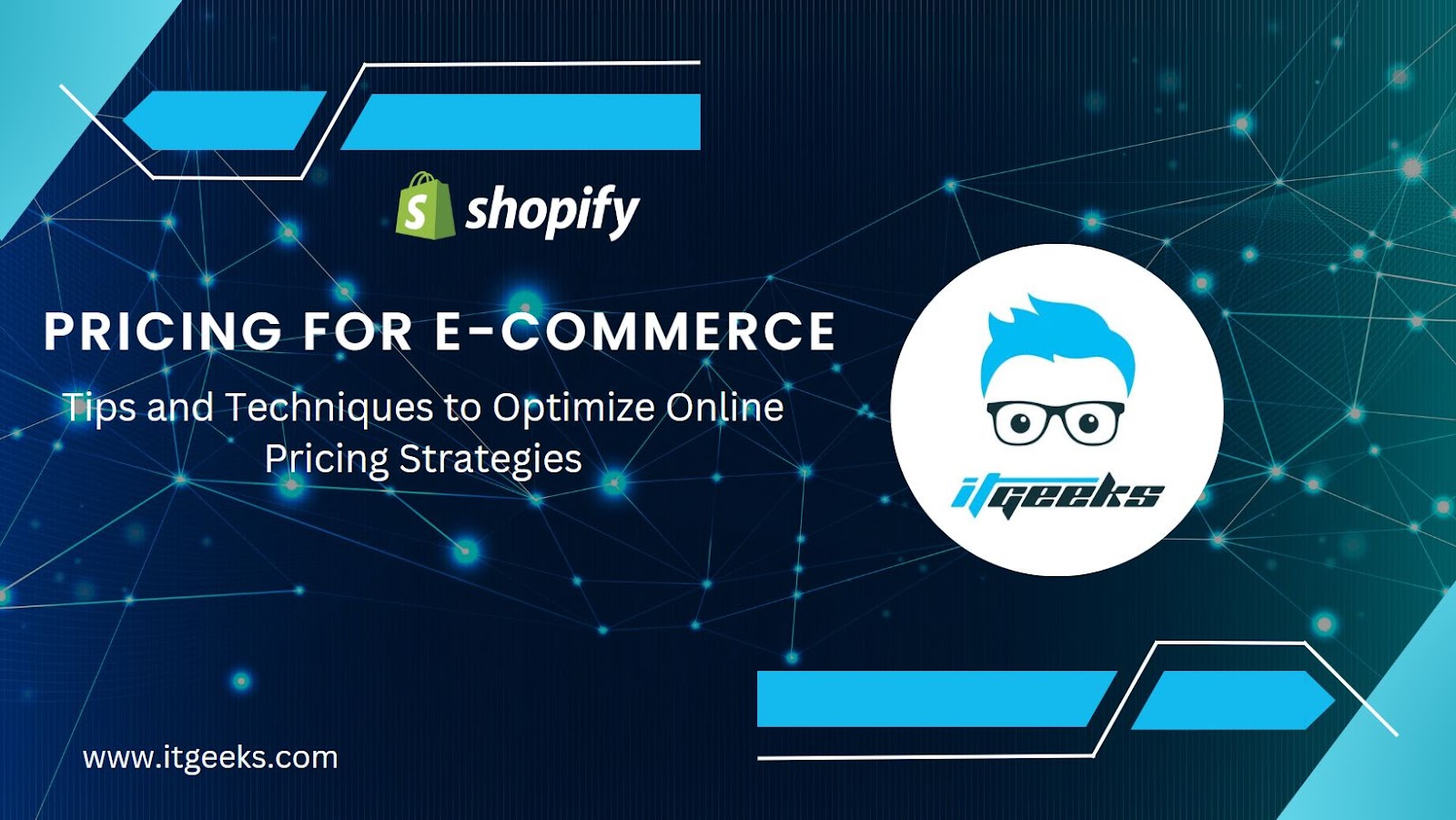- Table of Contents
- Introduction
- Understanding Pricing for E-commerce
- Setting the Right Price
- Tools and Technologies to Optimize Online Pricing Strategies
- Tips and Techniques for Effective E-commerce Pricing
- Avoiding Common Pricing Pitfalls
- The Dangers of Price Wars
- Conclusion
Introduction
Importance of Pricing in E-commerce
In the world of e-commerce, pricing plays a critical role in determining the success of online businesses. Pricing not only affects the profitability of a business but also influences customer behavior and perception. It is a powerful tool that can drive sales, attract new customers, and build brand loyalty. Effective pricing strategies can help businesses optimize their revenue, gain a competitive edge, and create a sustainable online presence.
Understanding Pricing for E-commerce
Definition and Significance of Pricing in the Online Retail Landscape
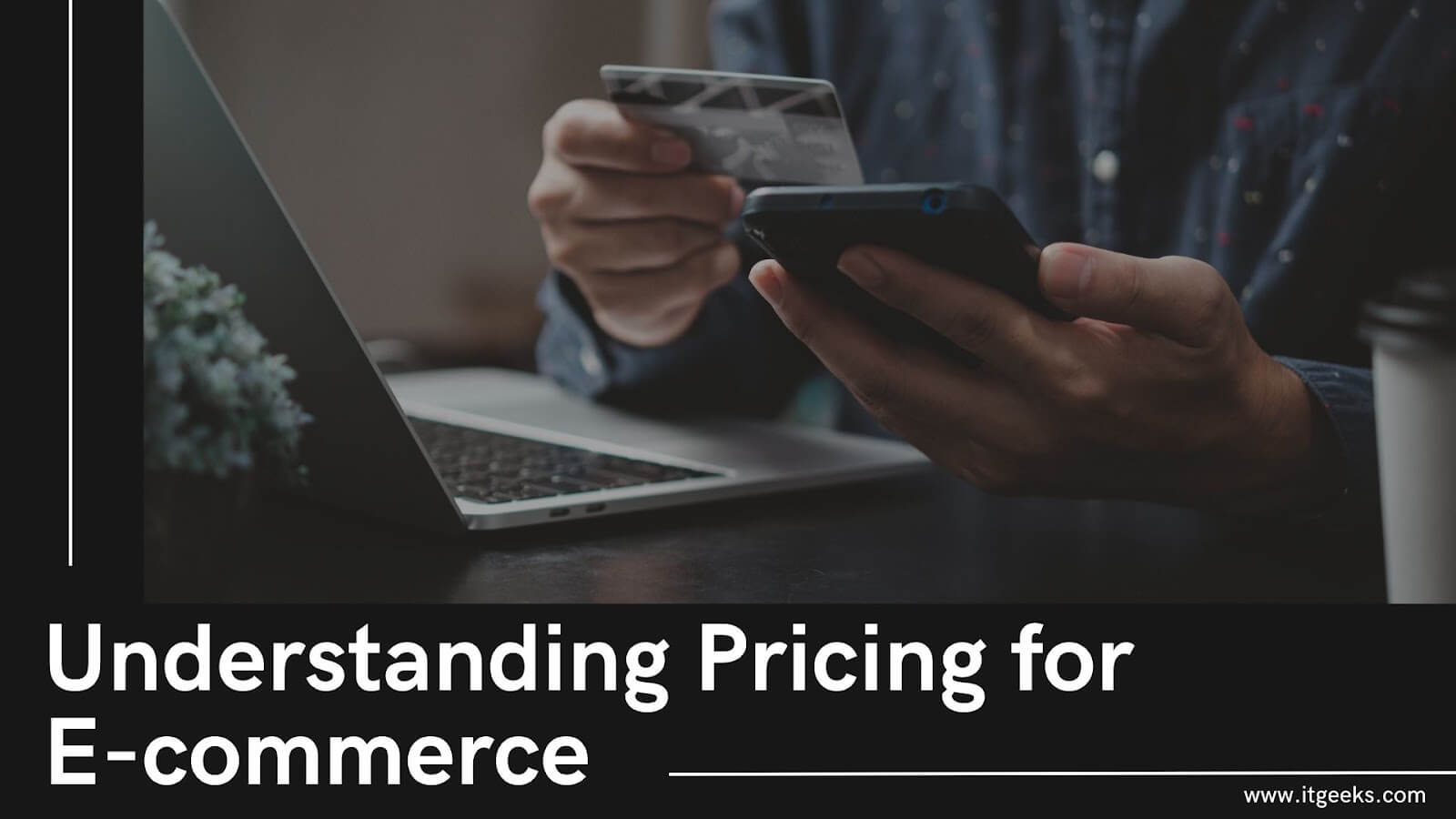
In the world of e-commerce, pricing refers to the strategic process of setting the right monetary value for products or services sold online. It plays a vital role in determining the success of an online business as it directly impacts profitability, customer perception, and competitiveness. Effective pricing strategies not only drive sales but also contribute to building customer loyalty and sustainable growth.
Pricing in the online retail landscape goes beyond simply assigning a number to a product. It involves careful consideration of various factors, such as costs, competition, customer perception, and market demand. By understanding these elements and making informed pricing decisions, e-commerce businesses can optimize their strategies to achieve their goals.
Key Factors Influencing E-commerce Pricing Decisions
Costs and Profit Margins:
When setting prices for online products, businesses must take into account their costs, including production, packaging, shipping, and overhead expenses. Additionally, determining the desired profit margin is crucial to ensure the financial viability of the business. By carefully analyzing costs and profit margins, e-commerce retailers can avoid underpricing or overpricing their products, both of which can have negative consequences.
Competition Analysis:
In the highly competitive e-commerce landscape, understanding and analyzing the pricing strategies of direct and indirect competitors is essential. By conducting a thorough competitive analysis, businesses can identify the pricing patterns followed by their competitors. This information helps them position their prices competitively while considering factors such as product differentiation, unique selling points, and target market.
Customer Perception and Value:
Customers’ perception of value greatly influences their purchasing decisions. E-commerce businesses must align their pricing with the perceived value of their products or services. Factors that contribute to customer perception include product quality, brand reputation, customer reviews, and the overall shopping experience. By effectively communicating the value proposition through pricing, businesses can attract and retain customers, even if their prices are higher than those of their competitors.
Market Demand and Trends:
Pricing decisions should be influenced by market demand and trends. Understanding customer preferences, seasonal variations, and industry trends enables e-commerce businesses to adjust prices accordingly. For instance, during high-demand periods or limited supply situations, businesses can set higher prices to capitalize on the market dynamics. Conversely, they may lower prices to drive sales during off-peak periods or to stay competitive in a saturated market.
By carefully considering these factors, e-commerce businesses can optimize their pricing strategies to maximize profitability, gain a competitive edge, and meet the evolving needs and expectations of their customers.
Setting the Right Price
Setting the right price for your products or services is crucial in the world of e-commerce. It directly impacts your profitability, market share, and customer loyalty. In this section, we will explore the key steps involved in determining the optimal price for your offerings and various pricing strategies and techniques you can implement to achieve your objectives.
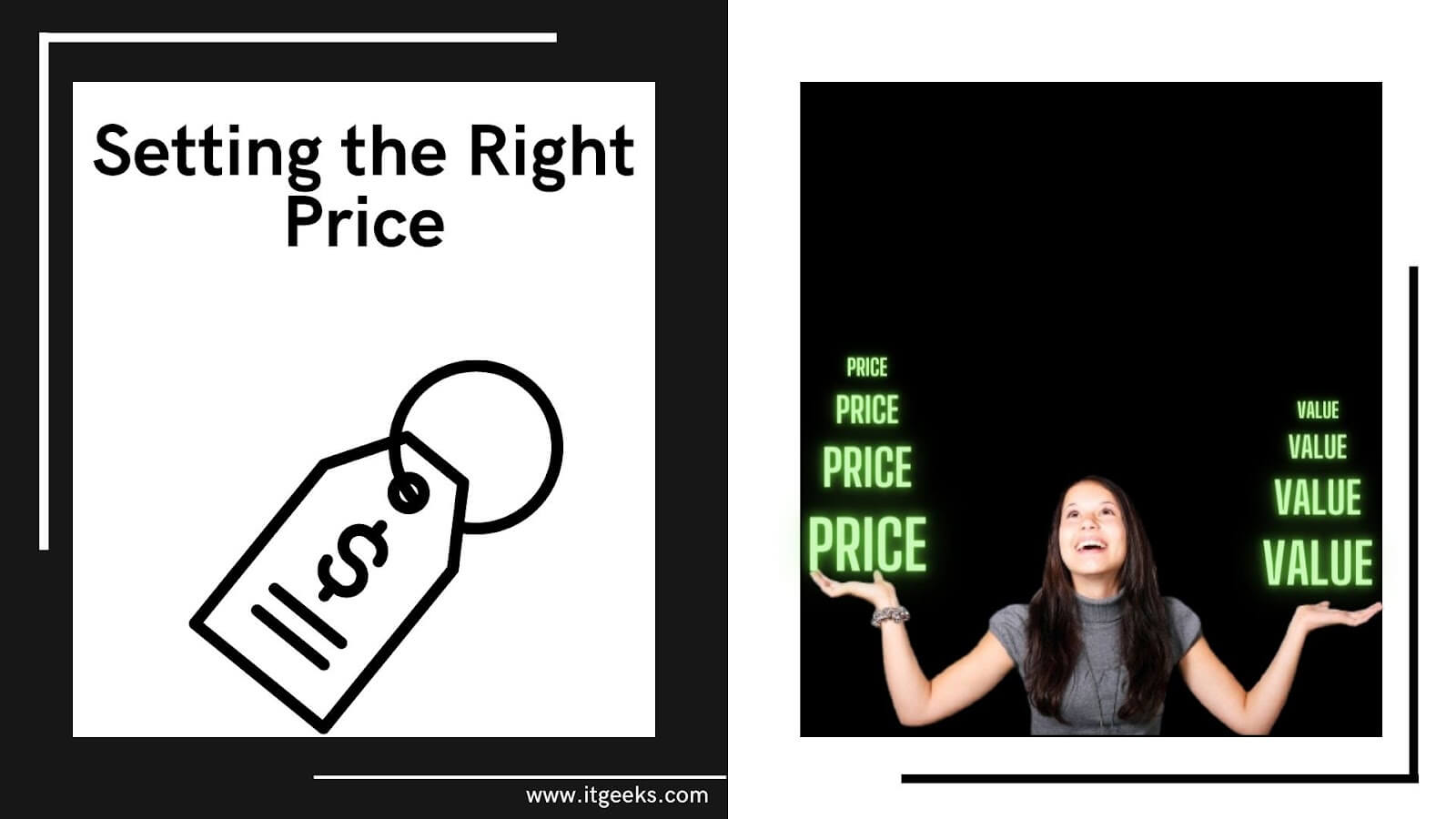
Researching the market and competitors
To establish a competitive pricing strategy, it is essential to thoroughly research the market and understand your direct and indirect competitors. Identifying who your competitors are and how they price their products will provide valuable insights for setting your own prices.
Identifying direct and indirect competitors
Direct competitors are businesses that offer similar products or services as yours, targeting the same customer base. They compete with you directly for sales. Indirect competitors, on the other hand, may offer different products or services but serve the same customer needs or solve similar problems. Identifying both types of competitors is important to understand the competitive landscape.
Start by conducting a competitor analysis. Identify the companies that offer similar products or services and evaluate their market position, target audience, pricing structures, and overall value proposition. This analysis will help you gauge the current pricing standards in the market and identify opportunities for differentiation.
Analyzing competitor pricing strategies
Once you have identified your competitors, analyze their pricing strategies. Look at the price points they have set for their products or services and understand how they position themselves in terms of value and quality. Pay attention to any discounts, promotions, or bundles they offer and how they communicate these to customers.
Competitor pricing analysis can provide insights into pricing trends, pricing elasticity within your market, and potential gaps or opportunities for your own pricing strategy. However, it’s important to note that while competitor analysis is valuable, it should not be the sole basis for determining your pricing. You need to consider your own costs, profit margins, and value proposition as well.
Determining pricing objectives
Before setting your prices, it is essential to define your pricing objectives. Your pricing objectives should align with your overall business goals and guide your pricing decisions.
Maximizing profitability
One common pricing objective is maximizing profitability. In this case, you aim to set prices that generate the highest possible profit margins for your business. This objective requires careful consideration of your costs, including production, overhead, marketing, and distribution expenses. You need to ensure that your prices cover these costs while leaving room for a healthy profit margin.
Gaining market share
Another pricing objective is to gain market share. This strategy involves setting competitive prices to attract customers away from your competitors. By offering lower prices or additional value at a similar price point, you can entice customers to choose your offerings over those of your competitors. This objective can be particularly effective if you are entering a crowded market or trying to establish your brand presence.
Building customer loyalty
Building customer loyalty is a long-term pricing objective that focuses on creating a loyal customer base. In this case, you may consider pricing strategies that provide discounts or rewards to repeat customers, encourage subscriptions or memberships, or offer exclusive deals to enhance customer loyalty. By providing added value and personalized experiences, you can build a strong bond with your customers, leading to repeat business and positive word-of-mouth recommendations.
Pricing strategies and techniques
Once you have identified your competitors and determined your pricing objectives, it’s time to explore various pricing strategies and techniques that can help you achieve your goals.
Cost-plus pricing
Cost-plus pricing involves calculating the total cost of producing your product or delivering your service and adding a predetermined markup to determine the selling price. This approach ensures that your prices cover all expenses and generate a desired profit margin. While cost-plus pricing is straightforward, it does not take into account customer perception of value and may not be the most effective strategy in highly competitive markets.
Value-based pricing
Value-based pricing focuses on the perceived value of your offerings from the customer’s perspective. It involves setting prices based on the benefits and value your products or services deliver to customers, rather than solely considering costs. By understanding your target customers’ needs, preferences, and willingness to pay, you can price your offerings based on the unique value proposition they offer. Value-based pricing allows for greater flexibility and potential for higher profit margins.
Dynamic pricing
Dynamic pricing involves adjusting prices in real-time based on market demand, customer behavior, and other factors. It allows you to respond to fluctuations in supply and demand, optimize revenue, and take advantage of price differentiation opportunities. Dynamic pricing can be particularly effective in industries where market conditions change rapidly, such as travel, events, and e-commerce. By leveraging data analytics and pricing optimization tools, you can implement dynamic pricing strategies to maximize profitability.
Psychological pricing
Psychological pricing techniques aim to influence customers’ perception of price and value. This strategy leverages human psychology to create the illusion of a better deal or value. Examples of psychological pricing techniques include setting prices just below a round number (e.g., $9.99 instead of $10), using tiered pricing (e.g., basic, standard, premium), or offering limited-time discounts. By appealing to customers’ emotions and perception of value, psychological pricing can influence purchasing decisions.
Promotional pricing
Promotional pricing involves offering temporary discounts, sales, or special offers to attract customers and drive sales. This strategy can be effective for clearing inventory, introducing new products, or boosting sales during specific seasons or events. Promotional pricing creates a sense of urgency and incentivizes customers to make a purchase. However, it’s important to carefully plan and communicate promotional pricing to avoid devaluing your products in the long run.
Tools and Technologies to Optimize Online Pricing Strategies
Introduction to E-commerce Platforms
E-commerce platforms play a vital role in managing and optimizing online pricing strategies. One popular and widely used platform is Shopify. Shopify offers a comprehensive set of features and functionalities that enable businesses to create, manage, and scale their online stores efficiently. With its user-friendly interface and customizable themes, Shopify allows sellers to showcase their products effectively and provide a seamless shopping experience to customers. Furthermore, Shopify provides various tools and integrations that can help optimize pricing strategies and drive sales.

Utilizing Pricing Optimization Software
To further enhance pricing strategies, businesses can leverage pricing optimization software. These tools are designed to analyze market data, customer behavior, and competitor pricing to provide actionable insights for setting optimal prices. The features and benefits of pricing optimization tools are manifold.
Firstly, pricing optimization software enables businesses to automate price adjustments based on real-time market conditions. This helps ensure competitive pricing and maximizes profitability. These tools can track market trends, monitor competitor pricing changes, and recommend appropriate price adjustments accordingly.
Secondly, pricing optimization software allows businesses to conduct price elasticity analysis. By understanding how price changes impact demand, businesses can determine the optimal price points that maximize revenue and profit margins. This analysis helps avoid underpricing or overpricing products, ensuring prices are aligned with customer willingness to pay.
Additionally, pricing optimization tools provide dynamic pricing capabilities. Dynamic pricing involves adjusting prices in real-time based on factors like demand, inventory levels, and customer behavior. By implementing dynamic pricing algorithms, businesses can optimize prices dynamically, ensuring competitiveness and capturing additional value during peak demand periods.
Furthermore, these tools often include revenue management features. Revenue management involves strategically pricing products based on demand fluctuations to maximize revenue. By analyzing historical sales data and market demand patterns, businesses can implement revenue management strategies that drive sales and optimize overall profitability.
Overall, pricing optimization software empowers businesses to make data-driven pricing decisions, optimize revenue streams, and enhance their competitive positioning in the market.
Implementing Data Analytics and Artificial Intelligence
Data analytics and artificial intelligence (AI) are invaluable tools for optimizing online pricing strategies. By leveraging data and AI-powered algorithms, businesses can gain valuable insights and automate pricing decisions.
Leveraging Data to Make Informed Pricing Decisions
Data analytics allows businesses to collect, analyze, and interpret large volumes of data related to pricing, sales, customer behavior, and market trends. This data can be used to identify pricing patterns, customer preferences, and market dynamics, enabling businesses to make informed pricing decisions.
For instance, businesses can analyze historical sales data to identify pricing trends and patterns. This analysis can help identify price thresholds, optimal price ranges, and customer price sensitivities. By understanding these factors, businesses can align their pricing strategies with customer expectations and market realities.
Furthermore, data analytics can provide insights into customer segmentation and behavior. By segmenting customers based on their preferences, purchasing habits, and price sensitivities, businesses can tailor pricing strategies to specific customer segments. This personalized approach can enhance customer satisfaction and drive repeat purchases.
AI-powered Pricing Algorithms for Dynamic Pricing
AI-powered pricing algorithms are revolutionizing the e-commerce industry by enabling dynamic and automated pricing decisions. These algorithms utilize machine learning techniques to analyze vast amounts of data and generate pricing recommendations based on predefined objectives.
AI algorithms can consider a range of variables, including demand fluctuations, competitor pricing, inventory levels, and customer behavior. By continuously analyzing these factors, AI algorithms can automatically adjust prices in real-time to optimize sales and revenue. This dynamic pricing approach helps businesses stay competitive, respond to market changes, and capture additional value during high-demand periods.
Moreover, AI algorithms can simulate and predict the impact of price changes on customer behavior and revenue. By running simulations and scenario analyses, businesses can assess the potential outcomes of price adjustments before implementing them. This proactive approach minimizes risks and enables businesses to make more informed decisions.
Tips and Techniques for Effective E-commerce Pricing
Pricing is a critical element in e-commerce that directly impacts the success of your online business. Finding the right pricing strategy can help you attract customers, increase sales, and maximize profits. In this section, we will explore some tips and techniques to optimize your e-commerce pricing strategies for maximum effectiveness.
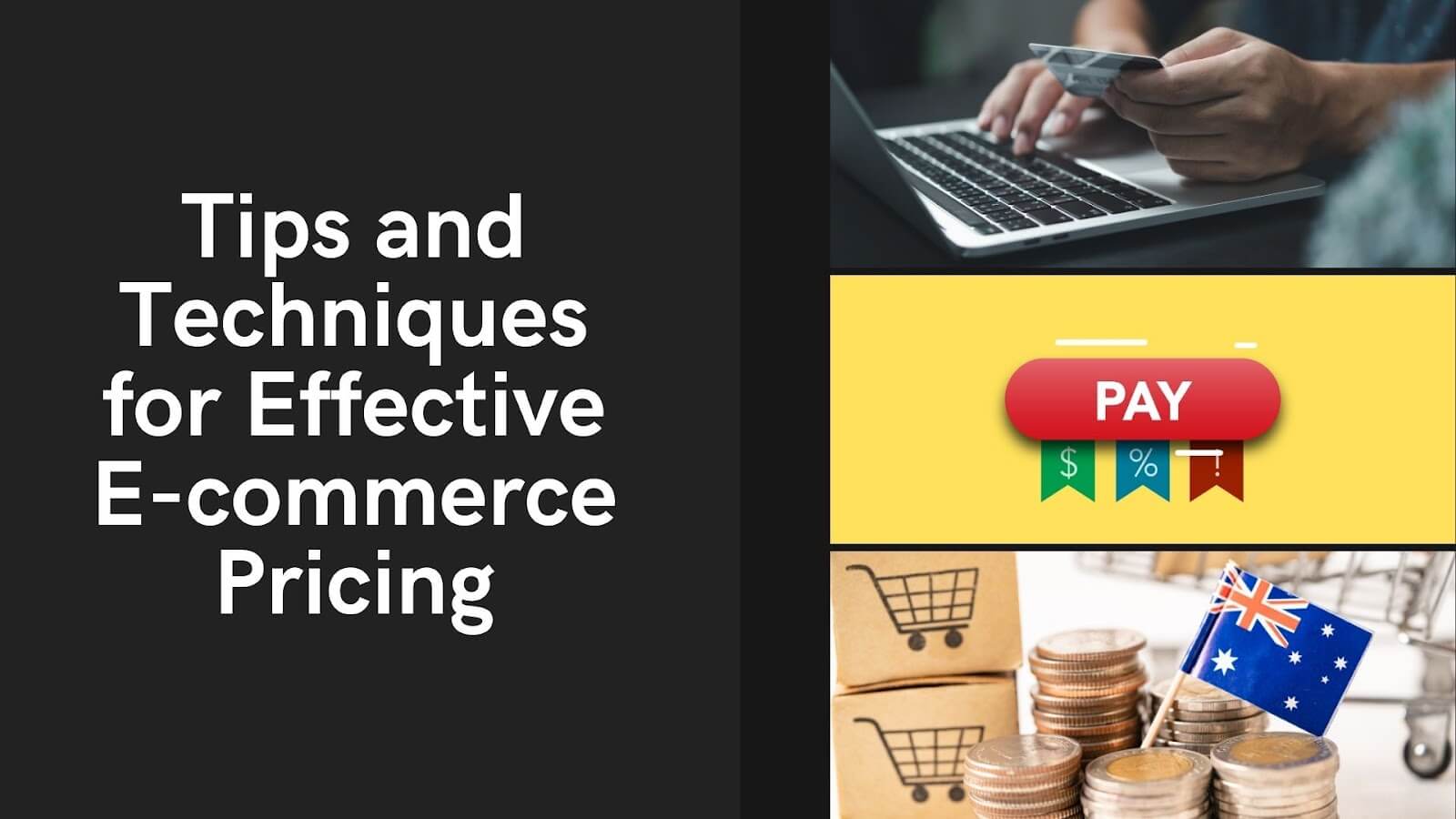
Conducting A/B testing for pricing variations
Testing different price points: A/B testing is a powerful technique that allows you to compare different pricing options and determine which one resonates best with your target audience. By creating two or more variations of your product pricing and randomly presenting them to different groups of customers, you can gather valuable data on their preferences and purchasing behavior.
For example, you can test different price points for the same product, such as offering a discount on one variation and keeping the price unchanged for another. Monitor customer response and conversion rates for each variation to identify which price point generates the highest sales and profitability.
Analyzing customer response and conversion rates: A/B testing goes beyond just comparing prices; it provides insights into customer behavior and preferences. Analyze the data collected during the A/B testing process to understand how customers respond to different pricing strategies.
Look for patterns and trends in conversion rates, customer feedback, and purchase frequency. Are customers more likely to buy when the price is slightly higher or when there is a discount? Are there specific customer segments that show a preference for certain price points? Use these insights to refine your pricing strategy and cater to your customers’ needs and expectations.
Offering personalized pricing and discounts
Segmenting customers based on behavior and preferences: Personalization is a key trend in e-commerce, and pricing is no exception. By segmenting your customers based on their behavior, preferences, and purchasing history, you can tailor pricing and discounts to their individual needs.
For instance, you can identify loyal customers and offer them exclusive discounts or rewards to incentivize repeat purchases. You can also target price-sensitive customers with discounted pricing options while offering premium pricing for those who value additional features or services. By personalizing your pricing, you can create a sense of exclusivity and build stronger customer relationships.
Implementing loyalty programs and personalized offers: Loyalty programs are a great way to reward your customers and encourage repeat purchases. By offering points, discounts, or freebies based on their buying behavior, you can foster customer loyalty and increase customer lifetime value.
Additionally, consider using personalized offers and promotions based on customer preferences and past purchases. For example, if a customer frequently buys products from a specific category, you can send them targeted offers or discounts related to that category. This personal touch makes customers feel valued and increases the likelihood of conversion.
Monitoring and adjusting prices in real-time
Keeping up with market changes and trends: The e-commerce landscape is dynamic, with market conditions and trends constantly evolving. It’s crucial to stay informed and monitor market changes that can impact your pricing strategy.
Keep an eye on competitor pricing, industry trends, and market demand. If you notice a competitor offering a similar product at a lower price, you may need to adjust your pricing to remain competitive. Similarly, if a particular product category is experiencing increased demand, you can consider adjusting prices to maximize profitability.
Responding to competitor pricing moves: Competitors can have a significant impact on your pricing strategy. Monitoring their pricing moves and responding strategically can give you a competitive edge. If a competitor lowers their prices, you may need to consider whether it’s necessary to match or beat their prices to retain customers.
However, pricing decisions should not be solely based on competitor moves. Evaluate your own costs, profit margins, and value proposition to ensure your pricing aligns with your business goals and objectives.
In addition to these tips and techniques, it’s important to regularly review and analyze your pricing strategy to ensure it remains effective. Customer preferences and market dynamics can change over time, so staying flexible and adaptable is crucial. Experiment with different pricing strategies, monitor their performance, and be open to making adjustments when necessary.
Remember, pricing is not a one-size-fits-all approach. What works for one e-commerce business may not work for another. Tailor your pricing strategy to your unique target audience, products, and business goals. By implementing effective pricing techniques and continuously optimizing your approach, you can drive sales, foster customer loyalty, and achieve long-term success in the competitive e-commerce landscape.
Avoiding Common Pricing Pitfalls
Pricing is a critical aspect of any e-commerce business, and while it can be challenging to determine the perfect price point, it’s crucial to avoid common pricing pitfalls that can have significant implications for your online store. In this section, we’ll explore three common pricing pitfalls: underpricing, overpricing, and engaging in price wars. By understanding these pitfalls and their potential consequences, you can develop effective strategies to optimize your pricing and drive success in the competitive e-commerce landscape.
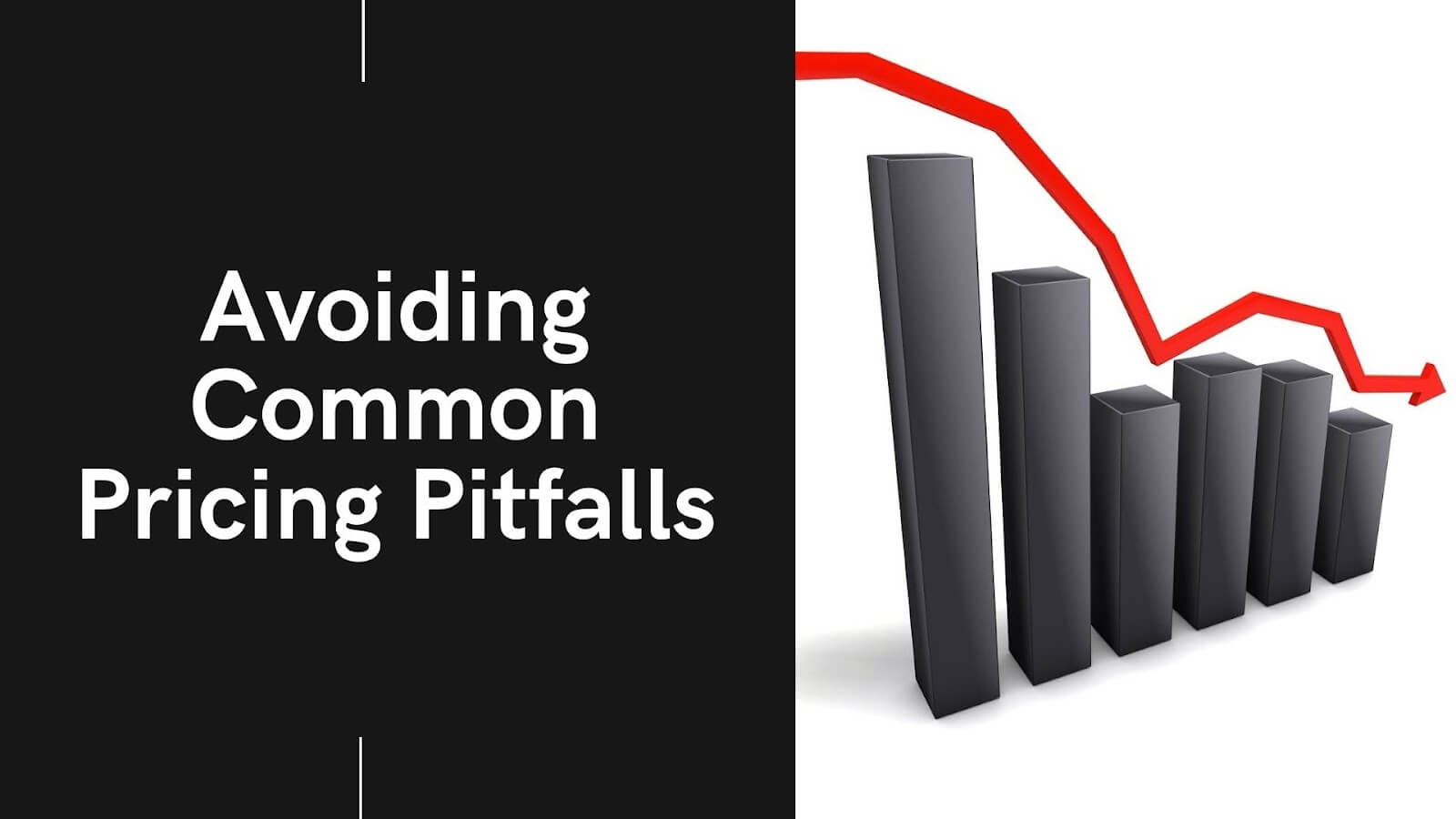
Underpricing and Its Implications
Underpricing refers to the practice of setting prices too low, often in an attempt to attract more customers or gain a competitive edge. While it may seem tempting to offer rock-bottom prices, underpricing can have several implications that can negatively impact your business in the long run.
- Diminished Profit Margins: Underpricing can significantly erode your profit margins, making it challenging to sustain and grow your business. With low prices, you may struggle to cover your costs, leading to financial strain and limited resources for investment in other critical areas.
- Perceived Low Quality: When customers encounter prices that seem too good to be true, they may question the quality and value of your products or services. Underpricing can inadvertently create a perception that your offerings are of inferior quality, leading to a loss of trust and potential customers seeking alternatives.
- Difficulty in Raising Prices: Once you establish a reputation for low prices, it can be challenging to raise them without facing resistance from your customers. Customers may become accustomed to the low prices and feel betrayed or misled if you suddenly increase them. This can put you in a difficult position where you may struggle to achieve sustainable profitability.
To avoid the implications of underpricing, it’s important to conduct thorough market research, consider your costs and profit margins, and strike a balance between competitive pricing and profitability. Focus on communicating the value and benefits of your products or services to justify your pricing to customers.
Overpricing and Potential Consequences
Overpricing, on the other hand, occurs when prices are set too high relative to market demand and customer expectations. While it may seem like a viable strategy to maximize profits, overpricing can have significant consequences that can harm your e-commerce business.
- Reduced Customer Demand: Overpricing can lead to a decline in customer demand as potential buyers may find your products or services unaffordable or choose to explore more reasonably priced alternatives. This can result in slower sales, lower conversion rates, and reduced revenue.
- Negative Brand Perception: Excessive pricing can create a negative perception of your brand, positioning it as exclusive or inaccessible. Customers may view your business as greedy or out of touch with their needs, leading to a loss of trust and a damaged reputation.
- Lost Competitive Advantage: Overpricing can create opportunities for your competitors to gain a competitive advantage by offering similar or even better products at more reasonable prices. Customers who perceive your prices as unreasonably high are more likely to explore alternative options, potentially leading to customer churn.
To avoid the consequences of overpricing, it’s crucial to conduct thorough market research, analyze competitor pricing strategies, and understand your target audience’s willingness to pay. Consider the perceived value of your offerings, customer expectations, and find the right balance between profitability and customer affordability.
The Dangers of Price Wars

Price wars occur when businesses engage in aggressive price competition, continuously lowering prices to gain a competitive edge. While it may seem like a way to attract customers and increase market share, price wars can have detrimental effects on your e-commerce business.
- Eroded Profit Margins: Engaging in price wars can lead to a downward spiral of prices, resulting in diminished profit margins for all involved parties. It becomes a race to the bottom, where no business can sustain profitability in the long term.
- Damaged Brand Reputation: Price wars can damage your brand’s reputation, as customers may perceive your business as desperate or lacking in value. It undermines the perception of quality and can create a negative association with your brand.
- Unsustainable Business Practices: Price wars can force businesses to compromise on quality, customer service, and operational efficiency to maintain low prices. This compromises the long-term sustainability and growth of your e-commerce venture.
To avoid being drawn into price wars, focus on differentiating your brand based on factors other than price. Emphasize the unique value proposition, quality, customer service, and overall experience you offer. By building a loyal customer base that appreciates the value you provide, you can avoid being solely price-driven.
Conclusion
In this blog post, we have explored the world of pricing for e-commerce and uncovered valuable tips and techniques to optimize online pricing strategies. Pricing plays a crucial role in the success of an e-commerce business, as it directly impacts profitability, customer perception, and market competitiveness. By understanding the key factors influencing pricing decisions, setting the right price, utilizing tools and technologies, and implementing effective techniques, you can enhance your e-commerce pricing strategy and drive success in the online retail landscape.
Throughout our discussion, we emphasized the importance of conducting thorough market research and competitor analysis. Identifying direct and indirect competitors and analyzing their pricing strategies can provide valuable insights into pricing trends and customer expectations. By setting clear pricing objectives, such as maximizing profitability, gaining market share, or building customer loyalty, you can align your pricing strategy with your overall business goals.
We explored various pricing strategies and techniques that can be employed in e-commerce. Cost-plus pricing, value-based pricing, dynamic pricing, psychological pricing, and promotional pricing each offer unique advantages and should be chosen based on your specific business needs. It is essential to experiment with different approaches and monitor their impact on customer behavior and conversion rates.
To optimize your pricing strategies, we discussed the role of tools and technologies in e-commerce. E-commerce platforms like Shopify offer robust features and integrations to streamline your pricing management. Pricing optimization software can help automate and analyze pricing data, allowing you to make informed decisions. Moreover, leveraging data analytics and artificial intelligence can provide valuable insights into market trends and enable dynamic pricing based on real-time demand and competition.
In addition to these strategies and tools, we highlighted several tips and techniques for effective e-commerce pricing. A/B testing different price points, offering personalized pricing and discounts based on customer segmentation, and monitoring and adjusting prices in real-time are all essential practices to refine your pricing strategy and drive customer engagement.
However, it is crucial to be mindful of common pricing pitfalls. Underpricing can lead to lower profit margins and perceived lower value, while overpricing may deter potential customers. Engaging in price wars can also have negative consequences for your brand and profitability. Therefore, it is important to strike the right balance and regularly assess and adjust your pricing strategy based on market dynamics.
Read More:
- The Ultimate Guide to Search Engine Optimization: Boost Your Website Traffic
- The Ultimate On-Page SEO Checklist for 2023
- The Power of Keywords: How to Choose and Use Them Effectively
- Facebook Ads vs. Google Ads: Which is Better for Your Business?
- Maximizing ROI with Pay-Per-Click (PPC) Ads: Tips and Tricks for Success
- How to Create Highly Targeted Facebook Ads for Maximum Conversions
- Creating Compelling Ad Copy: Tips for Writing Effective Ads
- AdSense vs. AdWords: Understanding the Differences between Google’s Advertising Programs
FAQ (Frequently Asked Questions):
While psychological pricing techniques can be effective, it is important to ensure transparency and avoid deceptive practices that may erode customer trust.
Tiered pricing models can be effective for a wide range of e-commerce businesses, especially those offering products or services with different features or levels of customization.
Dynamic pricing can benefit your e-commerce business by allowing you to respond to market changes in real-time, optimize profitability, and remain competitive in dynamic environments.
Regularly reviewing and adjusting your pricing strategy is essential to stay competitive and adapt to market changes. Aim to evaluate your prices at least quarterly or when significant market shifts occur.
When setting prices for e-commerce products, it is crucial to consider factors such as production costs, competitor prices, target market, customer demand, and perceived value.
Implementing dynamic pricing requires careful monitoring and consideration of potential risks, such as backlash from customers, price wars with competitors, and unintended revenue fluctuations.




